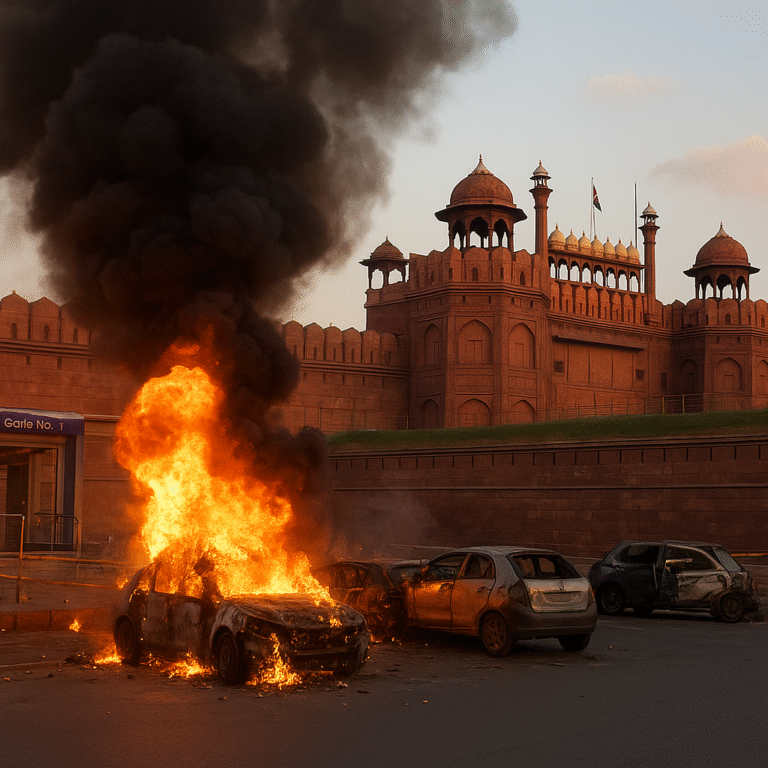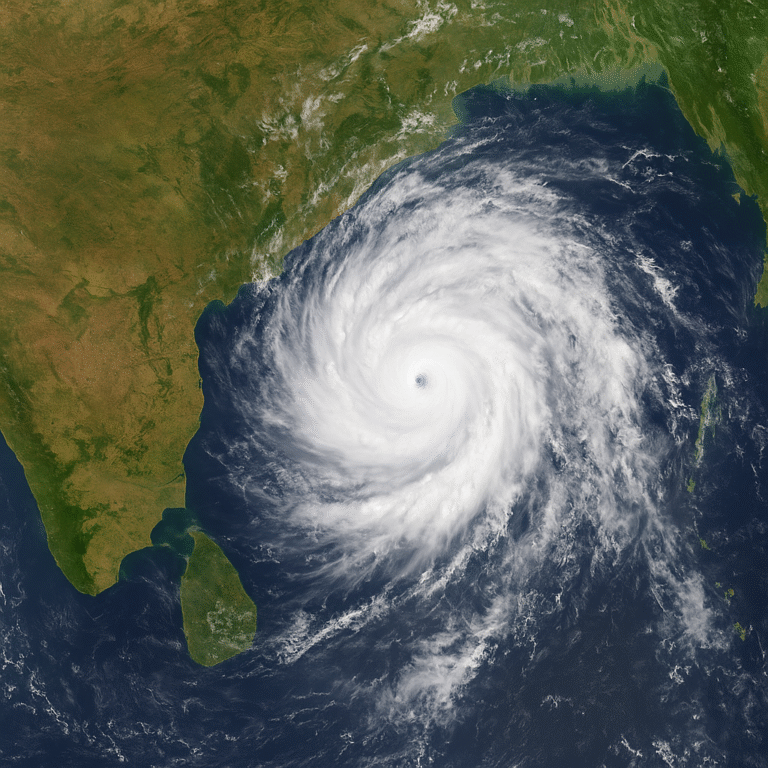
BENGALURU, June 4, 2025 — A jubilant celebration turned tragic on Tuesday as a stampede erupted outside the M. Chinnaswamy Stadium in Bengaluru during the Royal Challengers Bengaluru (RCB) Indian Premier League (IPL) victory parade, claiming at least 11 lives and leaving more than 50 others injured.
The incident, which occurred amid massive crowds gathered to celebrate RCB’s first-ever IPL title win, has cast a dark shadow over what was meant to be a historic moment for the team and its supporters. It has also triggered a wave of public anger and political scrutiny over crowd control measures and event management by authorities.
A Day Meant for Celebration Ends in Tragedy
The tragedy unfolded near Cubbon Park adjacent to the stadium, where thousands of fans had started assembling from the early hours of the day. With excitement building as RCB players were expected to make a grand appearance following their championship win, the crowd density reached critical levels by noon.
Eyewitnesses described scenes of confusion and panic as the barricades near the entry gates gave way under pressure. In the ensuing commotion, people were pushed and trampled as the crowd surged forward. The chaos quickly escalated, leaving little room for movement or escape.
Several individuals, including children and elderly fans, were caught in the crush. Bystanders attempted to administer first aid, but medical support was delayed due to the sheer density of the crowd.
Casualties and Emergency Response
Authorities confirmed that 11 individuals, including a child and two women, succumbed to injuries sustained during the stampede. Over 50 people were treated for injuries at various hospitals across the city, with some remaining in critical condition.
Emergency services, including police and ambulances, faced significant challenges accessing the scene. Dense human traffic, congested roads, and barricades hindered rapid response efforts.
Medical personnel worked through the day and night, administering treatment and identifying victims. Hospitals such as Bowring and Lady Curzon, St. Martha’s, and Vydehi Multispecialty took in the bulk of the injured, with government and private facilities working in coordination.
In a late evening press briefing, state health officials announced that medical expenses for the injured would be fully covered by the government, and a dedicated helpline was set up for families to obtain updates on missing persons.
Government Response and Compensation
In the immediate aftermath, the Karnataka Chief Minister addressed the state, expressing condolences and announcing an ex gratia compensation of ₹10 lakh for the families of the deceased and ₹2 lakh for the injured. A magisterial inquiry was ordered to investigate lapses in planning and execution.
The state government also confirmed the suspension of several officials responsible for crowd management, pending the outcome of the inquiry. The Bengaluru Police Commissioner was directed to submit a preliminary report within 48 hours.
“We are deeply saddened by the loss of lives during a moment of celebration. This should never have happened. We owe the victims and their families answers and justice,” the Chief Minister said in his address.
Political Fallout and Accusations
The incident has sparked political controversy, with opposition leaders criticizing the government for its failure to ensure public safety. Senior leaders questioned why crowd-control protocols were not enforced despite clear warnings of large turnout.
Opposition parties accused the government of treating the event with complacency and failing to engage the necessary civic and security infrastructure to manage an event of such magnitude.
In response, senior ministers admitted the situation had spiraled out of control and promised stringent measures to prevent such occurrences in the future. A special task force has now been constituted to review and reform crowd management strategies for public events statewide.
Experts Raise Alarm on Event Planning
Urban planners and public safety experts have condemned the lack of crowd control infrastructure and coordination. According to safety specialists, events of this scale demand a structured entry-and-exit protocol, public address systems, and real-time monitoring through CCTV and aerial surveillance — all of which were either missing or inadequately deployed.
Former police officials pointed out that such gatherings should have been preceded by thorough risk assessment exercises. Emergency drills, crowd dispersal strategies, and medical standby provisions must be treated as mandatory, not optional, at high-density events.
This tragedy, experts argue, exposes systemic negligence in India’s event safety protocols, particularly in urban centers where rapid population growth continues to outpace infrastructure.
A Pattern of Tragedies
The Bengaluru stampede is not an isolated event. In the past year alone, India has witnessed multiple stampede-related disasters:
-
Prayagraj (January 2025): During the Maha Kumbh Mela, over 39 people were killed and 200 injured in a stampede at one of the bathing ghats.
-
New Delhi (February 2025): A rush for general train tickets at New Delhi Railway Station resulted in the death of 18 and injuries to more than a dozen people.
-
Tirupati (January 2025): A stampede during a religious token distribution process at the temple killed 6 and injured nearly 40 devotees.
These incidents have revealed glaring inadequacies in how large crowds are managed across religious, cultural, and sporting events — often due to insufficient planning, communication breakdowns, and understaffed security forces.
Public Reactions and Mourning
The news of the stampede sparked a wave of grief across the city and the nation. Social media was flooded with messages of mourning, support for the victims’ families, and demands for accountability.
Candlelight vigils were organized across Bengaluru by citizen groups, while supporters of the RCB team observed a moment of silence during unofficial gatherings. Several former and current cricketers expressed their condolences, with some calling for reforms in how public celebrations are conducted in the future.
Educational institutions and local businesses in central Bengaluru observed a voluntary shutdown the following day as a mark of respect.
The Way Forward: A Call for Reform
The Bengaluru stampede serves as a harsh reminder of the risks posed by poorly managed public events. As India continues to grow in population and urban density, the country can no longer afford to treat crowd safety as an afterthought.
There is now widespread consensus among urban planners, administrators, and civil society organizations that systemic reforms are required, including:
-
Mandatory Risk Assessment for all large public events.
-
Technology Integration, such as AI-driven crowd analytics and drone surveillance.
-
Pre-Approved Safety Blueprints for stadiums and religious sites.
-
Dedicated Emergency Corridors and improved ambulance accessibility.
-
Training Programs for police, volunteers, and first responders.
-
Strict Enforcement of maximum occupancy limits.
Only a shift in policy and practice can prevent the recurrence of such tragic events.
Conclusion
As investigations continue and families grieve, Bengaluru is left grappling with the aftermath of a preventable disaster. What should have been a moment of joy for the city has instead become a symbol of institutional failure.
The coming weeks will reveal more about what went wrong and who should be held accountable. But more importantly, it presents an urgent call for India to rethink its approach to public safety — so that no celebration ever turns into mourning again.
Stampede at RCB Victory Parade in Bengaluru Claims 11 Lives, Sparks Nationwide Outcry
BENGALURU, June 4, 2025 — A jubilant celebration turned tragic on Tuesday as a stampede erupted outside the M. Chinnaswamy Stadium in Bengaluru during the Royal Challengers Bengaluru (RCB) Indian Premier League (IPL) victory parade, claiming at least 11 lives and leaving more than 50 others injured.
The incident, which occurred amid massive crowds gathered to celebrate RCB’s first-ever IPL title win, has cast a dark shadow over what was meant to be a historic moment for the team and its supporters. It has also triggered a wave of public anger and political scrutiny over crowd control measures and event management by authorities.
A Day Meant for Celebration Ends in Tragedy
The tragedy unfolded near Cubbon Park adjacent to the stadium, where thousands of fans had started assembling from the early hours of the day. With excitement building as RCB players were expected to make a grand appearance following their championship win, the crowd density reached critical levels by noon.
Eyewitnesses described scenes of confusion and panic as the barricades near the entry gates gave way under pressure. In the ensuing commotion, people were pushed and trampled as the crowd surged forward. The chaos quickly escalated, leaving little room for movement or escape.
Several individuals, including children and elderly fans, were caught in the crush. Bystanders attempted to administer first aid, but medical support was delayed due to the sheer density of the crowd.
Casualties and Emergency Response
Authorities confirmed that 11 individuals, including a child and two women, succumbed to injuries sustained during the stampede. Over 50 people were treated for injuries at various hospitals across the city, with some remaining in critical condition.
Emergency services, including police and ambulances, faced significant challenges accessing the scene. Dense human traffic, congested roads, and barricades hindered rapid response efforts.
Medical personnel worked through the day and night, administering treatment and identifying victims. Hospitals such as Bowring and Lady Curzon, St. Martha’s, and Vydehi Multispecialty took in the bulk of the injured, with government and private facilities working in coordination.
In a late evening press briefing, state health officials announced that medical expenses for the injured would be fully covered by the government, and a dedicated helpline was set up for families to obtain updates on missing persons.
Government Response and Compensation
In the immediate aftermath, the Karnataka Chief Minister addressed the state, expressing condolences and announcing an ex gratia compensation of ₹10 lakh for the families of the deceased and ₹2 lakh for the injured. A magisterial inquiry was ordered to investigate lapses in planning and execution.
The state government also confirmed the suspension of several officials responsible for crowd management, pending the outcome of the inquiry. The Bengaluru Police Commissioner was directed to submit a preliminary report within 48 hours.
“We are deeply saddened by the loss of lives during a moment of celebration. This should never have happened. We owe the victims and their families answers and justice,” the Chief Minister said in his address.
Political Fallout and Accusations
The incident has sparked political controversy, with opposition leaders criticizing the government for its failure to ensure public safety. Senior leaders questioned why crowd-control protocols were not enforced despite clear warnings of large turnout.
Opposition parties accused the government of treating the event with complacency and failing to engage the necessary civic and security infrastructure to manage an event of such magnitude.
In response, senior ministers admitted the situation had spiraled out of control and promised stringent measures to prevent such occurrences in the future. A special task force has now been constituted to review and reform crowd management strategies for public events statewide.
Experts Raise Alarm on Event Planning
Urban planners and public safety experts have condemned the lack of crowd control infrastructure and coordination. According to safety specialists, events of this scale demand a structured entry-and-exit protocol, public address systems, and real-time monitoring through CCTV and aerial surveillance — all of which were either missing or inadequately deployed.
Former police officials pointed out that such gatherings should have been preceded by thorough risk assessment exercises. Emergency drills, crowd dispersal strategies, and medical standby provisions must be treated as mandatory, not optional, at high-density events.
This tragedy, experts argue, exposes systemic negligence in India’s event safety protocols, particularly in urban centers where rapid population growth continues to outpace infrastructure.
A Pattern of Tragedies
The Bengaluru stampede is not an isolated event. In the past year alone, India has witnessed multiple stampede-related disasters:
-
Prayagraj (January 2025): During the Maha Kumbh Mela, over 39 people were killed and 200 injured in a stampede at one of the bathing ghats.
-
New Delhi (February 2025): A rush for general train tickets at New Delhi Railway Station resulted in the death of 18 and injuries to more than a dozen people.
-
Tirupati (January 2025): A stampede during a religious token distribution process at the temple killed 6 and injured nearly 40 devotees.
These incidents have revealed glaring inadequacies in how large crowds are managed across religious, cultural, and sporting events — often due to insufficient planning, communication breakdowns, and understaffed security forces.
Public Reactions and Mourning
The news of the stampede sparked a wave of grief across the city and the nation. Social media was flooded with messages of mourning, support for the victims’ families, and demands for accountability.
Candlelight vigils were organized across Bengaluru by citizen groups, while supporters of the RCB team observed a moment of silence during unofficial gatherings. Several former and current cricketers expressed their condolences, with some calling for reforms in how public celebrations are conducted in the future.
Educational institutions and local businesses in central Bengaluru observed a voluntary shutdown the following day as a mark of respect.
The Way Forward: A Call for Reform
The Bengaluru stampede serves as a harsh reminder of the risks posed by poorly managed public events. As India continues to grow in population and urban density, the country can no longer afford to treat crowd safety as an afterthought.
There is now widespread consensus among urban planners, administrators, and civil society organizations that systemic reforms are required, including:
-
Mandatory Risk Assessment for all large public events.
-
Technology Integration, such as AI-driven crowd analytics and drone surveillance.
-
Pre-Approved Safety Blueprints for stadiums and religious sites.
-
Dedicated Emergency Corridors and improved ambulance accessibility.
-
Training Programs for police, volunteers, and first responders.
-
Strict Enforcement of maximum occupancy limits.
Only a shift in policy and practice can prevent the recurrence of such tragic events.
Conclusion
As investigations continue and families grieve, Bengaluru is left grappling with the aftermath of a preventable disaster. What should have been a moment of joy for the city has instead become a symbol of institutional failure.
The coming weeks will reveal more about what went wrong and who should be held accountable. But more importantly, it presents an urgent call for India to rethink its approach to public safety — so that no celebration ever turns into mourning again.



